I can pinpoint my intense love for plants to when I was in high school. I was particularly interested in medicinal plants. My mom had given me a little space in the garden that I could plant whatever herbs I wanted. Mullein, comfrey, wormwood, rue, hyssop, sweet woodruff, mugwort, and horehound were just some of the plants I grew in my small space. When I went away for college I no longer had a little garden as I was living in apartments. Spring was the most difficult time for me because I had this yearning to start growing something. It might be why my apartment had so many indoor plants that my college roommate and I called it “The Jungle.” I also had an orchid addiction which I had to give up when I got cats. Don’t ask.
With our garden redesign one of my primary goals is to create an area that is safe for and from the chickens. They can safely forage but won’t destroy everything. In addition I want to make it a haven for beneficial insects, especially bees and other pollinators. Increasing biodiversity is incredibly important for helping control pests and increasing the health of the farm. Plus pretty flowers aren’t too bad either.
The Free-Range Chicken Garden has some great lists in it for creating your own chicken-safe gardens. Jessi Bloom, the author, breaks them up in to the type of plant (tree, shrub, perennial, etc.) and also whether they are safe for chickens to eat or just chicken-proof. She’s also got lists for fragrant plants, plants that will muffle chicken noises and colorful seasonal plants. She includes a great list on plants that are toxic to chickens and shouldn’t be planted where they have access. I’m happy to say I don’t have any of those plants in my yard.

This garden mixes different colors and textures to make a beautiful landscape.
The trick to producing a beautiful planting plan is to choose plants that have a variety of colors (flowers and foliage), sizes and are different textures. Avoid placing different species of plants that have similar colors and textures together. Also, planting in odd numbers more aesthetically pleasing than planting in even numbers. When planting a large area don’t use just a singular plant unless it’s a focal point/accent piece.
The following plants are the ones I’ve chosen for our garden.
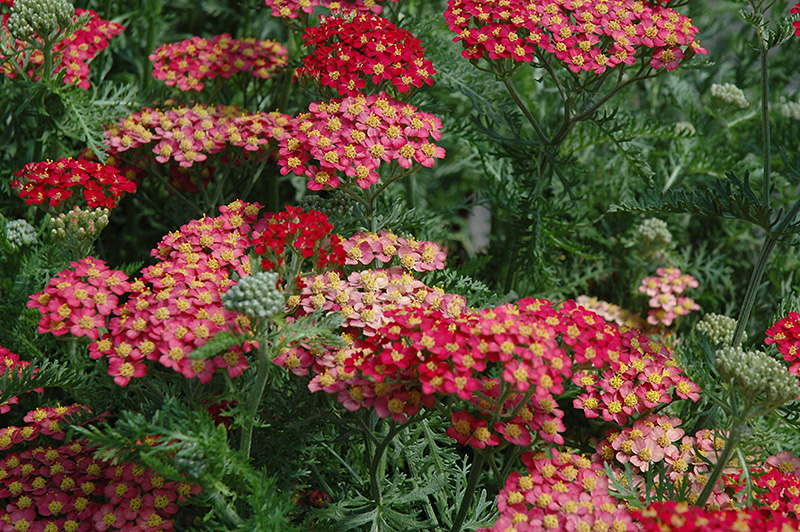 Achillea millifolium ‘Paprika’ – medicinal and used in biodynamic farming because of its high potassium content. Attracts bees and other beneficial insects.
Achillea millifolium ‘Paprika’ – medicinal and used in biodynamic farming because of its high potassium content. Attracts bees and other beneficial insects.
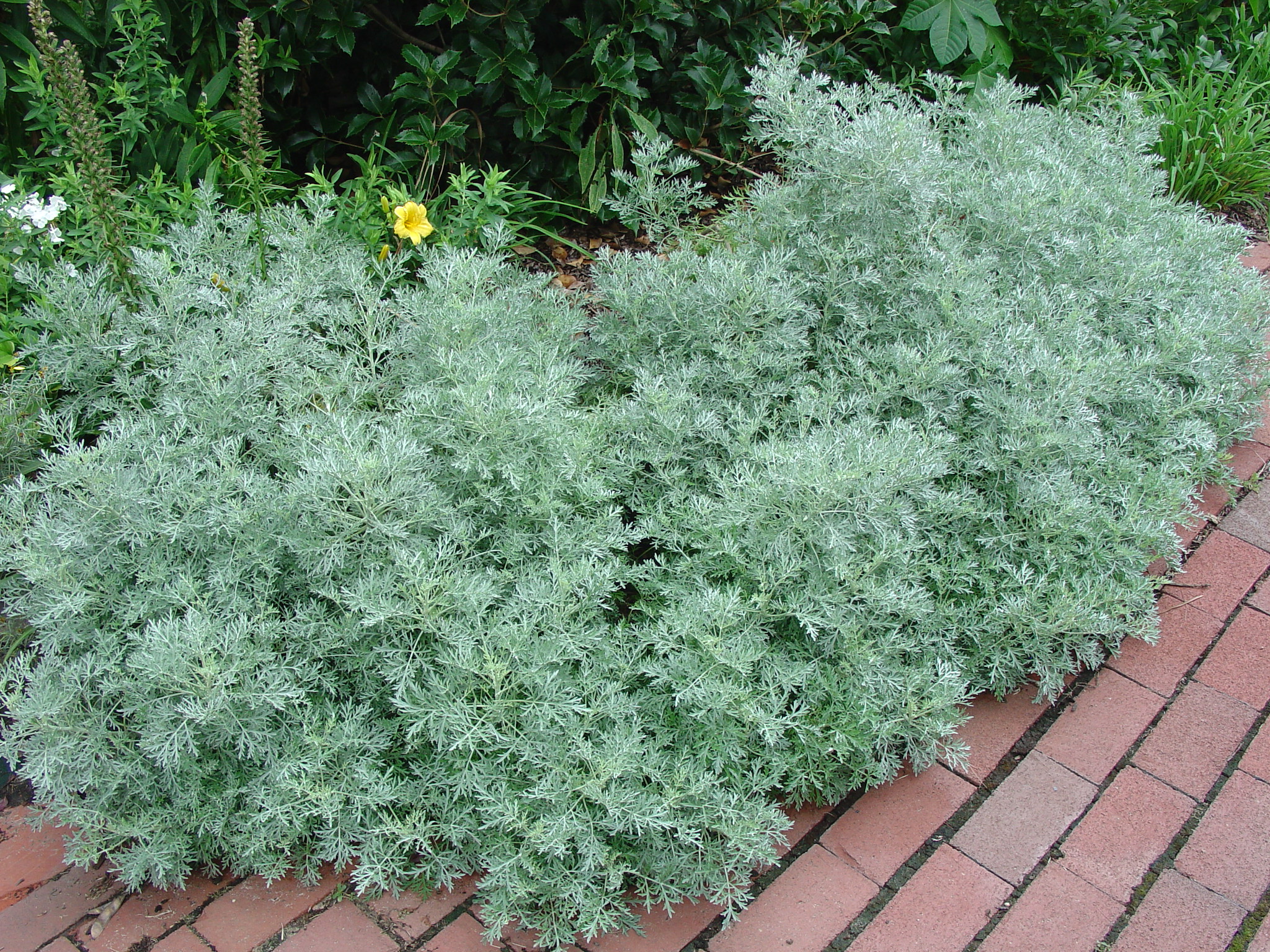 Artemesia ‘Powis Castle’ – similar but not necessarily the same as Artemesia absinthe (what they make Absinth from). I’ve grown this previously and was amazed by the amount of beneficial insects that loved to hide in it. Striking foliage adds color and texture contrast.
Artemesia ‘Powis Castle’ – similar but not necessarily the same as Artemesia absinthe (what they make Absinth from). I’ve grown this previously and was amazed by the amount of beneficial insects that loved to hide in it. Striking foliage adds color and texture contrast.
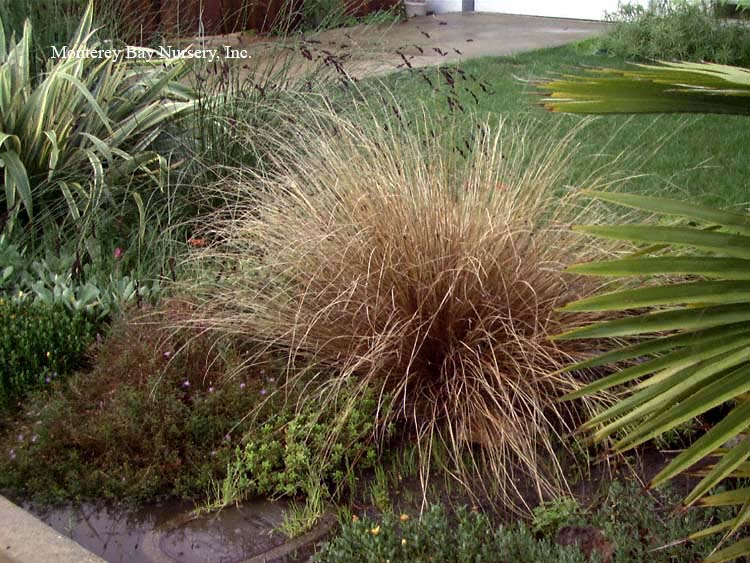 Carex buchananii – Chicken proof. Adds contrasting color and texture.
Carex buchananii – Chicken proof. Adds contrasting color and texture.
 Dahlia ‘Mystic Illusion’ – edible (relative of sunflowers and sunchokes). Almost pure black foliage and bright yellow flowers add a striking contrast.
Dahlia ‘Mystic Illusion’ – edible (relative of sunflowers and sunchokes). Almost pure black foliage and bright yellow flowers add a striking contrast.
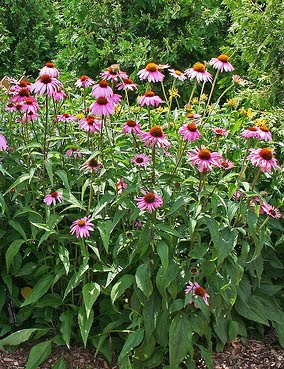 Echinacea p. ‘Bravado’ – medicinal and chicken-resistant. Huge, beautiful flowers are a bonus.
Echinacea p. ‘Bravado’ – medicinal and chicken-resistant. Huge, beautiful flowers are a bonus.
 Gaillardia ‘Monarch’ – Attracts bees and other beneficial insects.
Gaillardia ‘Monarch’ – Attracts bees and other beneficial insects.
Hemerocallis – Chicken resistant and edible!

 Leymus condensatus – Chicken resistant and adds color and texture contrast.
Leymus condensatus – Chicken resistant and adds color and texture contrast.
 Marrubium vulgare (Horehound) – medicinal, edible (candies can be made using horehound), and attractive to bees. Not necessarily the best looking plant but I want it primarily for nostalgic reasons.
Marrubium vulgare (Horehound) – medicinal, edible (candies can be made using horehound), and attractive to bees. Not necessarily the best looking plant but I want it primarily for nostalgic reasons.
 Miscanthus s. ‘Cosmopolitan’ – A tall variegated grass that is chicken resistant but works well as a cover for them to hide or just lay under.
Miscanthus s. ‘Cosmopolitan’ – A tall variegated grass that is chicken resistant but works well as a cover for them to hide or just lay under.
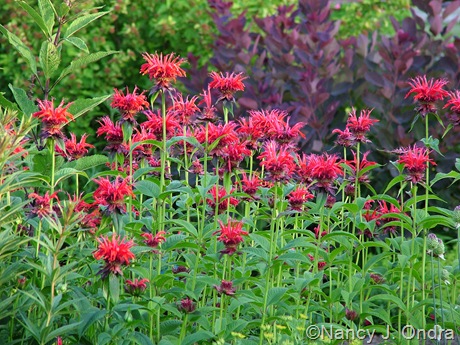 Monarda d. ‘Jacob Cline’ – Chicken-resistant, medicinal and very attractive to pollinators. There’s a reason it’s called “Bee Balm.” It’s one of my favorite plants to boot. I just adore the striking red flowers.
Monarda d. ‘Jacob Cline’ – Chicken-resistant, medicinal and very attractive to pollinators. There’s a reason it’s called “Bee Balm.” It’s one of my favorite plants to boot. I just adore the striking red flowers.
 Passiflora ‘Maypop’ – Edible for both chickens and humans (it’s passionfruit!). This will be one of the vines we’ll be using on the fence around the chicken yard.
Passiflora ‘Maypop’ – Edible for both chickens and humans (it’s passionfruit!). This will be one of the vines we’ll be using on the fence around the chicken yard.
 Penstemon ‘Firebird’ – Great plant for beneficial insects including pollinators. The bumblebees are particularly fond of it.
Penstemon ‘Firebird’ – Great plant for beneficial insects including pollinators. The bumblebees are particularly fond of it.
 Rosa rugosa – Edible for both humans (used in jelly, tea, etc.) and chickens along with being used in Chinese medicine. Also serves as good cover for chickens to safely rest underneath.
Rosa rugosa – Edible for both humans (used in jelly, tea, etc.) and chickens along with being used in Chinese medicine. Also serves as good cover for chickens to safely rest underneath.
 Rudbeckia ‘Indian Summer’- Chicken-resistant and attractive to pollinators. I absolutely adore the flowers as well.
Rudbeckia ‘Indian Summer’- Chicken-resistant and attractive to pollinators. I absolutely adore the flowers as well.
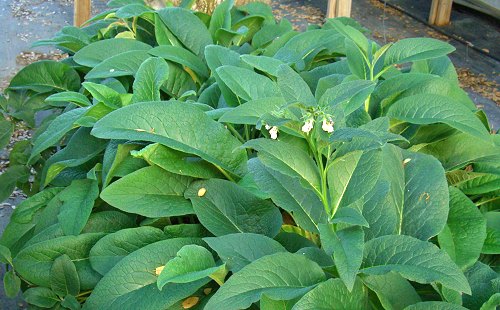 Symphytum officinale – better known as Comfrey, it is medicinal and edible for chickens (it’s controversial whether it is edible for humans). It is also an important plant for permaculture and around here it attracts quite a few pollinators.
Symphytum officinale – better known as Comfrey, it is medicinal and edible for chickens (it’s controversial whether it is edible for humans). It is also an important plant for permaculture and around here it attracts quite a few pollinators.

 Vitis spp – Edible for both humans and chickens. Mmmmm, grapes. We’ll be planting these on arbors and on the chicken run.
Vitis spp – Edible for both humans and chickens. Mmmmm, grapes. We’ll be planting these on arbors and on the chicken run.


Just finished the book and highly recommend it, too. I plan to copy those plant lists before I return the book to the library–such good info.